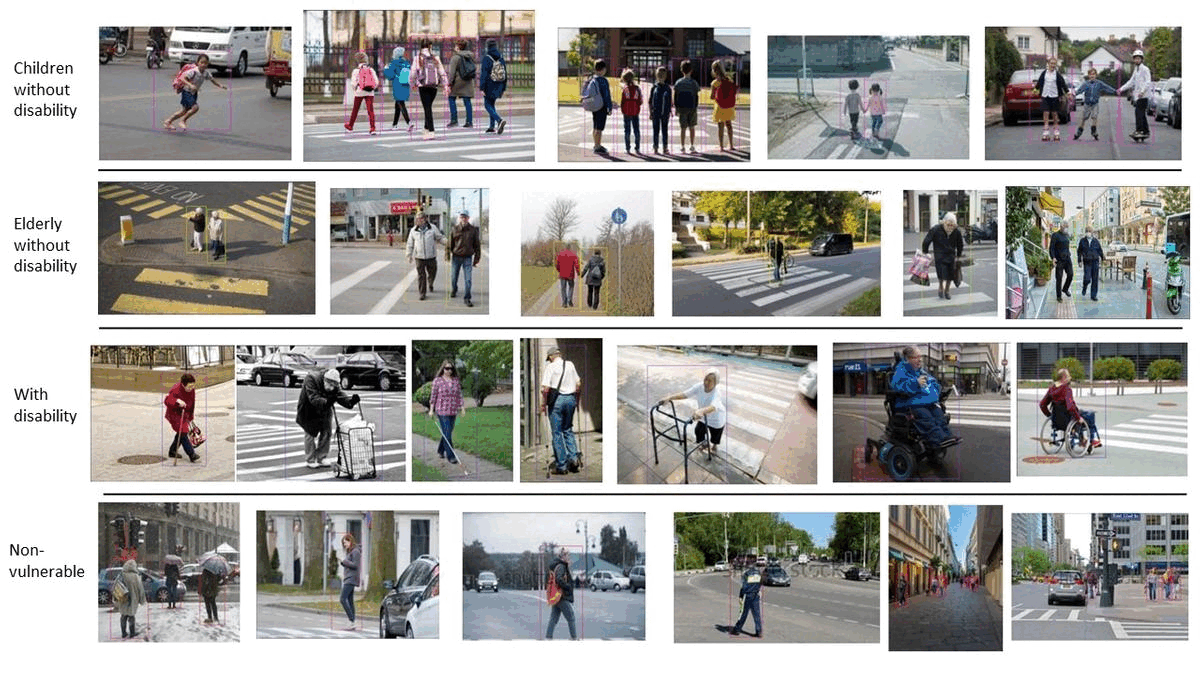Comparison Of Deep Object Detectors On A New Vulnerable Pedestrian Dataset
Pedestrian safety is one primary concern in autonomous driving. The under-representation of vulnerable groups in today's pedestrian datasets points to an urgent need for a dataset of vulnerable road users. In order to help train comprehensive models and subsequently drive research to improve the accuracy of vulnerable pedestrian identification, we first introduce a new dataset for vulnerable pedestrian detection in this paper: the BG Vulnerable Pedestrian (BGVP) dataset. The dataset includes four classes, i.e., Children Without Disability, Elderly without Disability, With Disability, and Non-Vulnerable. This dataset consists of images collected from the public domain and manually-annotated bounding boxes. In addition, on the proposed dataset, we have trained and tested five classic or state-of-the-art object detection models, i.e., YOLOv4, YOLOv5, YOLOX, Faster R-CNN, and EfficientDet. Our results indicate that YOLOX and YOLOv4 perform the best on our dataset, YOLOv4 scoring 0.7999 and YOLOX scoring 0.7779 on the mAP 0.5 metric, while YOLOX outperforms YOLOv4 by 3.8 percent on the mAP 0.5:0.95 metric. Generally speaking, all five detectors do well predicting the With Disability class and perform poorly in the Elderly Without Disability class. YOLOX consistently outperforms all other detectors on the mAP (0.5:0.95) per class metric, obtaining 0.5644, 0.5242, 0.4781, and 0.6796 for Children Without Disability, Elderly Without Disability, Non-vulnerable, and With Disability, respectively. Our dataset and codes are available at https://github.com/devvansh1997/BGVP.
PDF AbstractCode
Datasets
Introduced in the Paper:
 BGVP
BGVP





